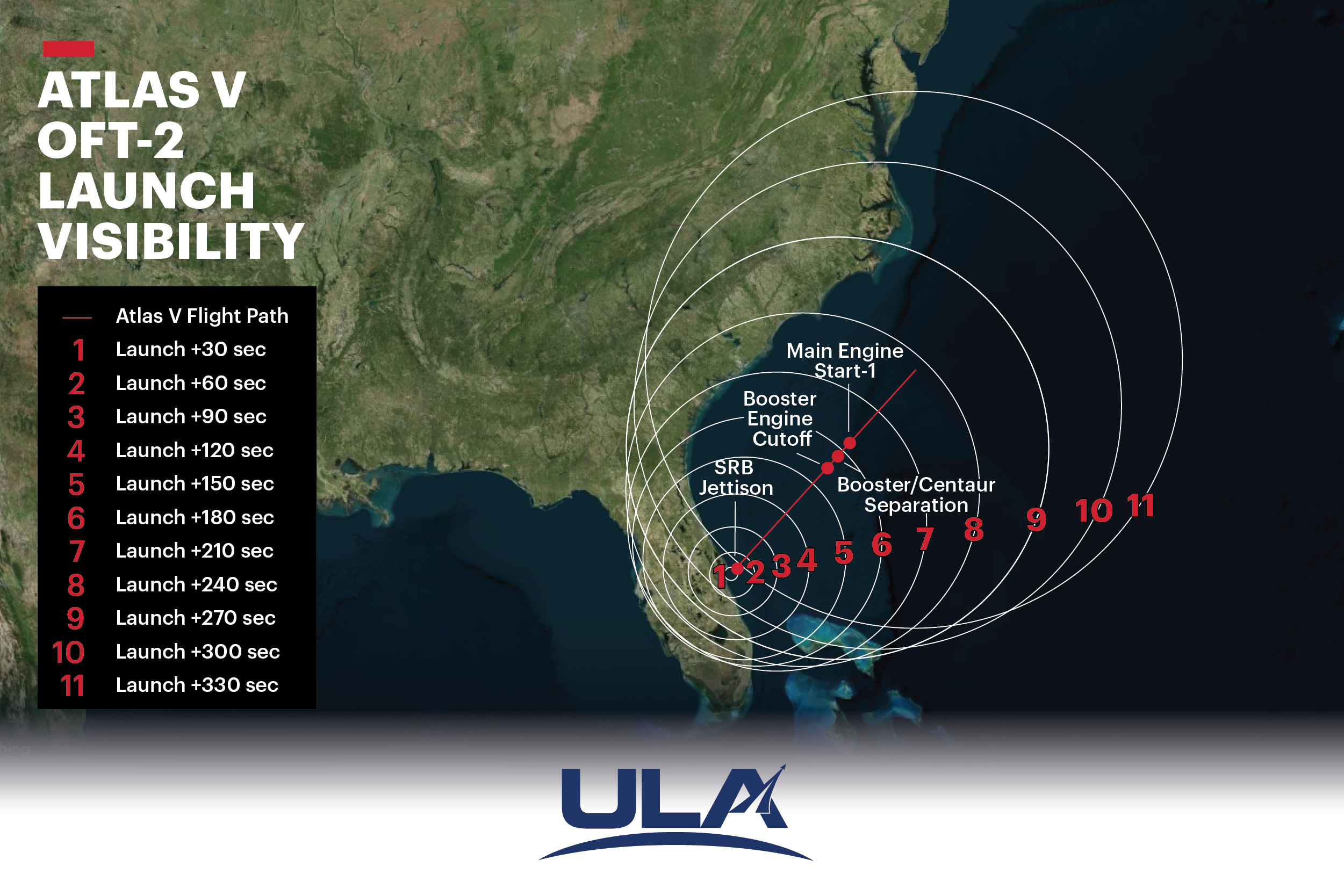See Boeing's Starliner launch tonight from southeastern US (visibility map)
Update: Boeing's Starliner OFT-2 spacecraft has successfully launched into orbit on a ULA Atlas V rocket to begin a crucial test flight to the International Space Station. It is expected to reach the station Friday, May 20, at 7:10 p.m. EDT (2310 GMT). Follow our live mission updates for Starliner's OFT-2 for more.
Boeing's Starliner capsule will launch on a crucial test mission to the International Space Station this evening (May 19), and many folks in the southeastern U.S. will be able to see the action with their own eyes.
Starliner is scheduled to lift off atop a United Launch Alliance (ULA) Atlas V rocket from Florida's Cape Canaveral Space Force Station tonight at 6:54 p.m. EDT (2254 GMT), kicking off an uncrewed mission called Orbital Flight Test 2 (OFT-2).
No matter where you live, you can watch the spaceflight action online here at Space.com, courtesy of NASA. But if you reside near the Atlantic coast from Florida up to Delaware, you could catch a naked-eye glimpse of the Atlas V and Starliner rising into the sky, according to a visibility map ULA posted on Twitter today.
Live updates: Boeing Starliner Orbital Flight Test 2 mission to ISS
Those viewing opportunities are all weather-dependent, of course. But if you live in the visibility range and your skies are clear this evening, you should go outside at the specified time and look up and to the east; you might just see something memorable.
If all goes according to plan on OFT-2, Starliner will arrive at the International Space Station on Friday evening (May 20), just over 24 hours after lifting off. The capsule will remain docked to the orbiting lab for four or five days, then come back down to Earth for a parachute-aided touchdown in New Mexico.
Breaking space news, the latest updates on rocket launches, skywatching events and more!
The main goal is to show that Starliner is ready to carry NASA astronauts to and from the space station. Boeing signed a contract with the space agency for such taxi services in 2014. SpaceX signed a similar deal at the same time and has already launched four operational crewed flights to the orbiting lab with its Falcon 9 rocket and Dragon capsule.
As the mission name suggests, OFT-2 will be Starliner's second try to reach the space station. During the first attempt, in December 2019, the capsule suffered a number of glitches and got stranded in an orbit too low to allow a meetup.
OFT-2 was originally supposed to launch last summer, but prelaunch checks revealed a number of stuck valves in Starliner's propulsion system, a problem that took about eight months to identify and address.
Mike Wall is the author of "Out There" (Grand Central Publishing, 2018; illustrated by Karl Tate), a book about the search for alien life. Follow him on Twitter @michaeldwall. Follow us on Twitter @Spacedotcom or on Facebook.

Michael Wall is a Senior Space Writer with Space.com and joined the team in 2010. He primarily covers exoplanets, spaceflight and military space, but has been known to dabble in the space art beat. His book about the search for alien life, "Out There," was published on Nov. 13, 2018. Before becoming a science writer, Michael worked as a herpetologist and wildlife biologist. He has a Ph.D. in evolutionary biology from the University of Sydney, Australia, a bachelor's degree from the University of Arizona, and a graduate certificate in science writing from the University of California, Santa Cruz. To find out what his latest project is, you can follow Michael on Twitter.

